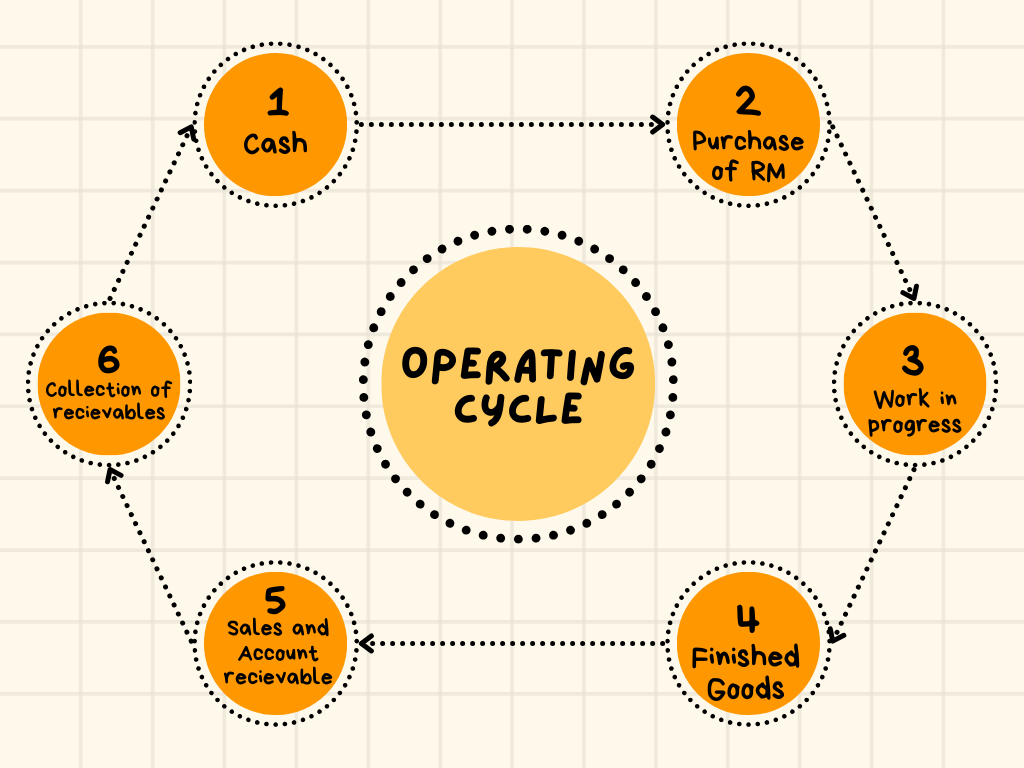In today’s competitive business environment, cash flow is critical to the survival of any company. However, it is possible for a business to operate without relying on cash. By leveraging smart strategies, businesses can thrive even in cash-strapped situations. Firstly, let’s understand about operating cycle.
What is operating cycle ?
The operating cycle, also known as the cash conversion cycle, is the period it takes for a business to purchase inventory, sell it, and convert the sales into cash. It’s a key metric that measures the efficiency of a company in managing its inventory and receivables and how quickly it can turn its assets into cash.
The operating cycle is divided into three main stages:
- Inventory Period: The time taken to purchase raw materials, convert them into finished goods, and then sell them.
- Accounts Receivable Period: The time taken to collect cash from customers after a sale has been made.
- Accounts Payable Period: The time taken to pay suppliers for the goods purchased.
The formula for the Operating Cycle (OC) is: Operating Cycle=Inventory Period+Accounts Receivable Period−Accounts Payable Period


Why should businesses know about it ?
Understanding the operating cycle is crucial for businesses for several reasons:
- Cash Flow Management: A shorter operating cycle means the company can recover its investment in inventory and receivables more quickly, leading to better cash flow management.
- Working Capital Management: Businesses can use the operating cycle to optimize their working capital, ensuring they have enough liquidity to meet short-term obligations.
- Financial Planning: By understanding the operating cycle, businesses can plan their financing needs more accurately, ensuring they have enough resources to continue operations smoothly.
- Operational Efficiency: Monitoring the operating cycle can help businesses identify inefficiencies in their processes and take corrective actions to improve overall efficiency.
Realistic Numerical Example of Operating Cycle with 0 Cash
Let’s assume a manufacturing company operates with the following data:
- Raw Material Holding Period (RMP): 15 days
- Work-In-Progress Holding Period (WIP): 10 days
- Finished Goods Holding Period (FGP): 20 days
- Debtors Turnover Period (DTP): 30 days (the time it takes to collect cash from customers)
- Creditors Turnover Period (CTP): 60 days (the time the business has to pay its suppliers)
Step 1: Calculate the Operating Cycle (OC)
The operating cycle formula is: Operating Cycle=RMP+WIP+FGP+DTP−CTP
Let’s plug in the values:
Operating Cycle=15+10+20+30−60=15 days
This means the company has a net operating cycle of 15 days.
Step 2: Understanding How the Business Operates with 0 Cash
In this scenario, the business can operate without cash because the company has 60 days to pay its creditors (suppliers), but it only takes 15 days to complete its entire operating cycle (from purchasing raw materials to receiving cash from customers).
- Creditors Turnover Period (60 days): This is the time the business has to pay its suppliers for the raw materials.
- Operating Cycle (15 days): The time it takes for the business to convert raw materials into cash from customers is just 15 days.
Step 3: How Long Can the Business Sustain with 0 Cash?
The business can sustain for 45 days without any cash, thanks to the difference between the time it takes to complete the operating cycle (15 days) and the time it has to pay its suppliers (60 days).
- Day 0: The business purchases raw materials on credit (with a 60-day payment term).
- Day 15: The business completes its operating cycle, sells the finished goods, and receives cash from customers.
- Day 60: The business finally pays its suppliers for the raw materials purchased on Day 0.
During the 45-day period between receiving cash from customers and paying suppliers, the business can use the funds to operate without needing to invest any cash upfront.
Conclusion:
This example shows how a business can operate with 0 cash by using its operating cycle efficiently. By delaying payments to suppliers (creditors turnover period) while ensuring that inventory and receivables are converted to cash quickly (operating cycle of 15 days), the business can maintain operations and sustain for 45 days without requiring any upfront cash.



